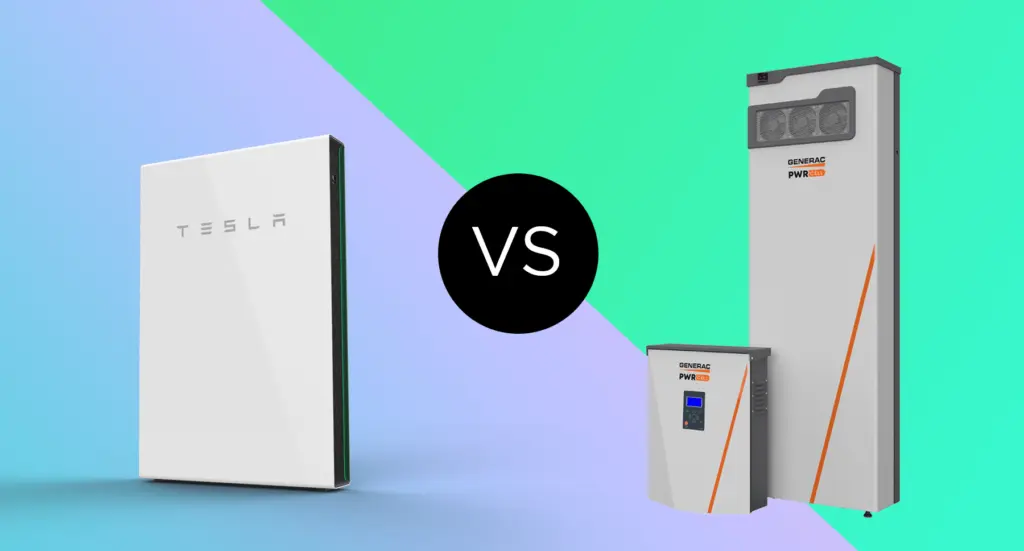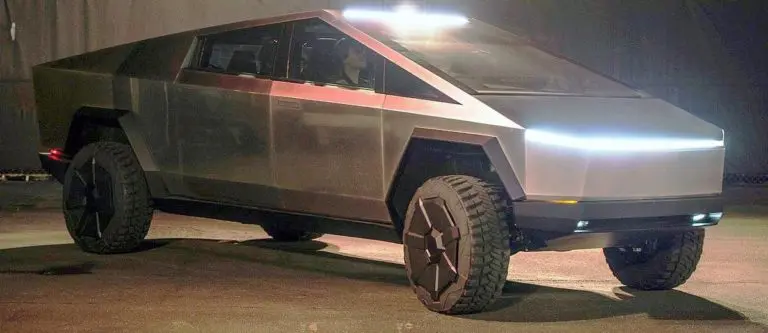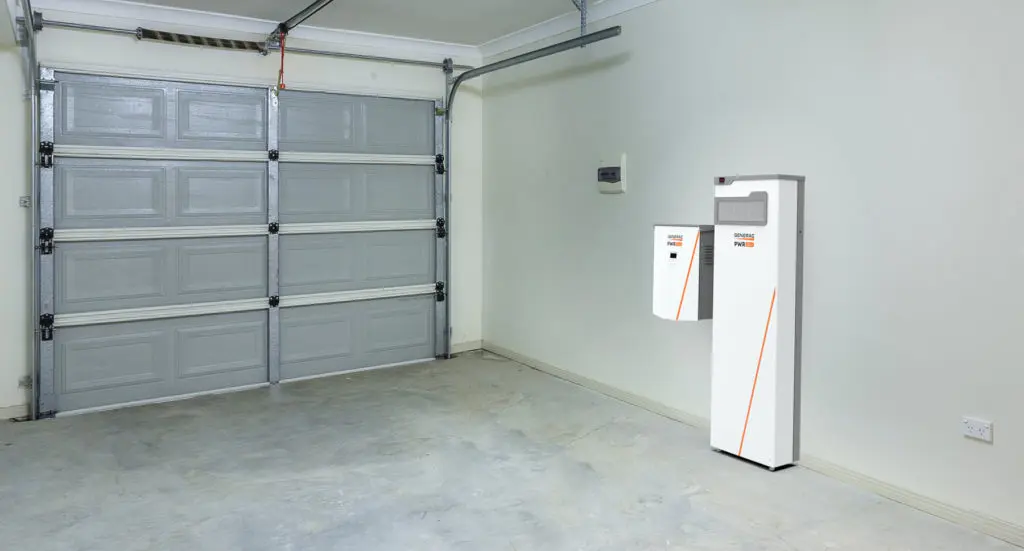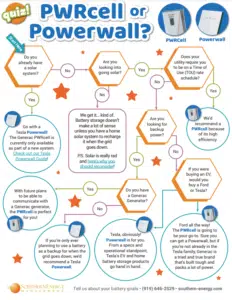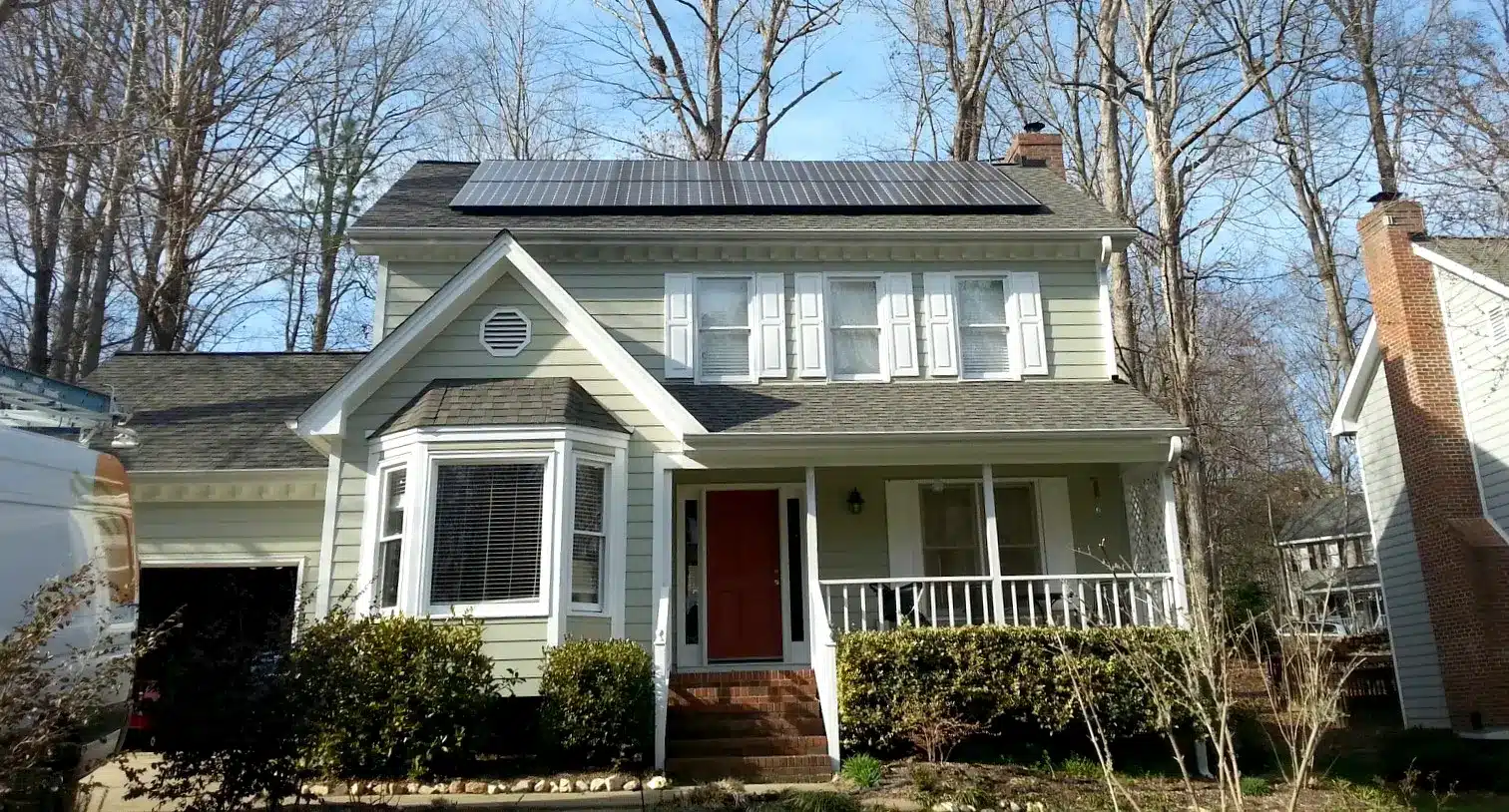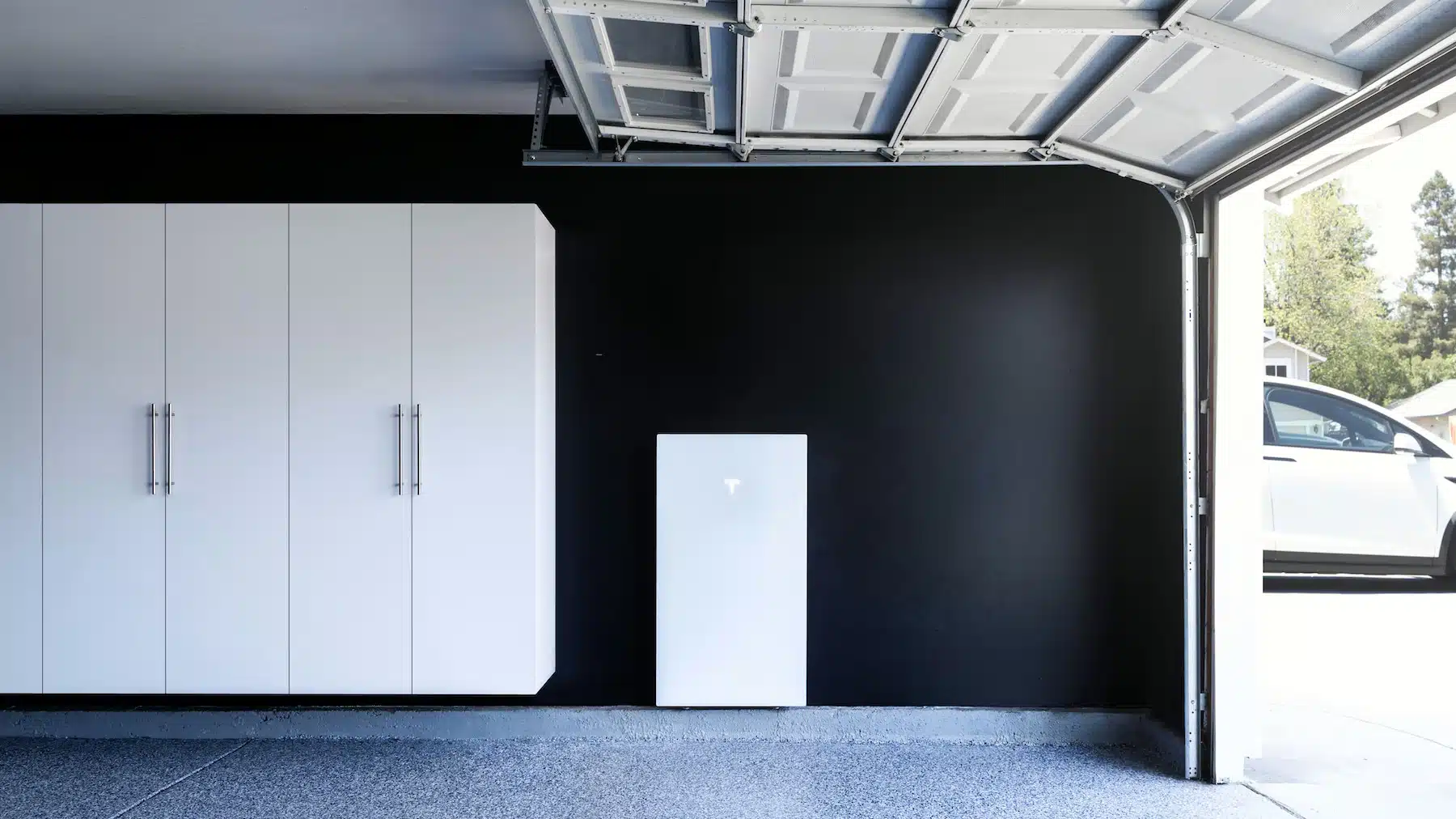- Lindsay Brecheisen
- June 9, 2021
- 7 Minute Read
Topics in This Article
Battery Storage Breakdown
If you’re looking into solar + battery storage, you’ve probably heard of the Tesla Powerwall or the Generac PWRcell. (Pssst… it’s okay if you haven’t, check out our guides on the Powerwall and PWRcell for some background.)
So now you’re likely asking, “What is the difference between the two? Which one is right for me?”
In short — we love them both for different reasons! From a high level, the two batteries provide the same end goal through different technical aspects and efficiencies. While both batteries are pretty darn close in how they perform, there are a few key differences that will determine which is a better fit based on your personal situation.
Let’s dive into comparisons between the two home storage batteries and how they can better fit your needs!
Ready to Start Saving?
Request a free virtual solar + energy storage evaluation today!
What's your style?
From a brand standpoint, Generac and Tesla are both very strong with a proven track record, but have different approaches. Most simply put — they know what the heck they’re doin’! We can find other, cheaper solutions, but these two are always going to be at the top of the market.
The decision between a Powerwall or a PWRcell typically comes down to personal preference and specific energy goals. Let’s take a closer look!
Using cars as an example, let’s say you want to buy an electric vehicle and you’re debating between the new Ford F-150 Lightning or a Tesla Cybertruck (in this fictitious scenario, both models have similar pricing and capabilities). The choice between the two mainly boils down to which brand you like better and some specifics. For example — Are the F150’s cab customization options important? Or is the Cybertruck’s standard minimalist interior perfect, as is?
While both vehicles in this situation will get the job done, key differences like this and the overall brand are what will sway you to one option over the other — the same is true for the Powerwall vs the PWRcell!
Image credit: Wikipedia
Your Guide to Generac PWRcell
Do you already have solar?
Generac and Tesla have two different approaches when it comes to pairing solar and batteries. If you already have a solar system, Tesla will most likely be your only battery option of the two. The one caveat is if you have an existing solar system with a Generac inverter, then you absolutely can install a Generac PWRcell battery (the Generac inverter, however, does cost more than a traditional grid-tied inverter).
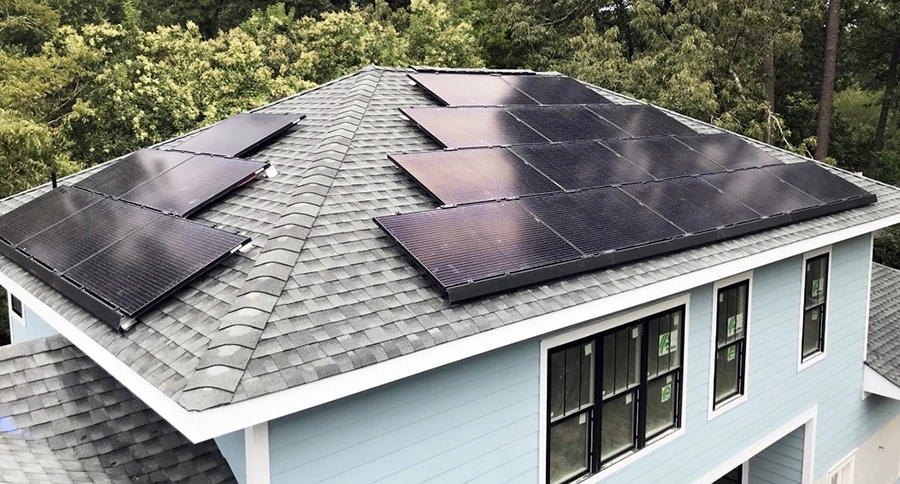
Tesla Powerwall
A Powerwall can retrofit an existing home solar system because it’s an AC-coupled battery. In this case, a homeowner will usually have a few different brands that make up their solar power system. We typically recommend a SolarEdge inverter and optimizer, with a Tesla Gateway, Tesla Powerwall, and your preferred solar panels.
Generac PWRcell
As of right now, a PWRcell can only be added to a new solar system. This is because it is a DC-coupled battery. From a very high level, the solar panels and battery are both wired into the system on the DC side of the inverter. As a result, the controls of the battery need to be able to communicate with the controls of the inverter so they need to be from the same manufacturer. Generac’s one-system approach allows homeowners to utilize the PWRcell and Generac-branded inverter for a seamless battery + solar product.
Free Solar Power 101 Guide
How are you looking to use your battery?
Both batteries can be used to store and provide backup power, and help you reach your energy independence goals. Depending on what your energy storage priorities are, there are a few slight differences that may impact what we would recommend for you.
Tesla Powerwall
If your main goal for a battery is to have a backup during grid outages, then this might be a better solution for you. The Powerwall is still an option for day-to-day storage, of course, but its efficiency can be 7-10% lower than the PWRcell as a result of having to complete two additional power inversions.
Generac PWRcell
This will be a great solution if, in addition to grid outage backup, you’re looking to maximize daily usage; whether you want to avoid the high time of use rates, become more self-sufficient, or achieve another energy goal.
As we mentioned, the Generac system is 7-10% more efficient than the Powerwall. This is because it goes through two fewer power inversions since it’s a DC-coupled system. For daily usage, it gives you a little more bang for your buck.
How do you use energy?
Think about how you use energy in your home — what’s important to you? Maybe you’re finding your home needs more energy later in the day when your solar isn’t producing as much, or maybe you have an extra beer fridge that HAS to be kept cool if the power goes out. We all have different energy needs and that is something you’ll need to take into consideration when looking into battery options.
We are a call away to help you determine these needs but in the meantime, here are some questions to look into:
- How much energy are you consuming monthly and how much is your solar producing?
- In case of a grid outage, which loads are most important to you?
- Does your utility require your battery to be on a time-of-use (TOU) rate schedule?
Tesla Powerwall
As a very general point of reference, a single Powerwall should be able to cover your emergency circuits, lights, and outlets. If you are looking to power larger appliances, such as a whole HVAC unit, two to three Powerwalls are a good place to start.
Each Powerwall can deliver up to 21 amps, and up to 9 Powerwalls can be stacked together. It’s important to note that even if there is enough amperage to cover all of your loads, we still need to consider how quickly that electricity will be drawn to maintain the effectiveness of the battery.
Generac PWRcell
We install a fully loaded cabinet that has an output of 35 amps. Unlike the Powerwall, the Generac system has Smart Management Modules which are an exciting addition when it comes to deciding what to back up and keep running when the power goes out. A module is installed under the breaker panel for each high voltage circuit you want to prioritize. Up to 8 Smart Management Modules can be installed, allowing you to back up your whole home by setting priorities for your PWRcell.
If you your utility is going to require you to be on a time-of-use (TOU) rate schedule, it means that you will be cycling the battery every day. In which case, having the Generac is going to be a stronger solution for you.
What's your budget?
Comparing the price of a Powerwall and PWRcell isn’t exactly apples to apples. By knowing your specific needs, we can help make this comparison a little easier for you. For now, here are the average prices:
Tesla Powerwall
A single Powerwall can run from $15,400 to $15,900, with additional units running between $11,900 to $11,600 each.
Generac PWRcell
The pricing for a cabinet fully loaded with 6 battery modules is around $15,000 to $17,000. Keep in mind, a full cabinet has higher efficiency and more load capacity than the Powerwall.
What's Next?
As we mentioned from the beginning, both of these batteries are great options for different reasons. Choosing the right solution for you will come down to your specific energy needs. We are here to help you!
Download our fun quiz to get started then schedule a meeting to let us know your energy needs and get a customized battery storage plan. Our solar educators are here to help navigate and support you on your battery + solar journey!
Top 17 Powerwall Questions Answered
Ready to Get Started?
Schedule a free assessment to learn more about solar power & battery storage for your home.
About Us
North Carolina’s solar power and building performance expert. Founded in 2001, we’ve worked for 20+ years to improve the way people make and use energy.
© 2023 Southern Energy Management, Inc.

